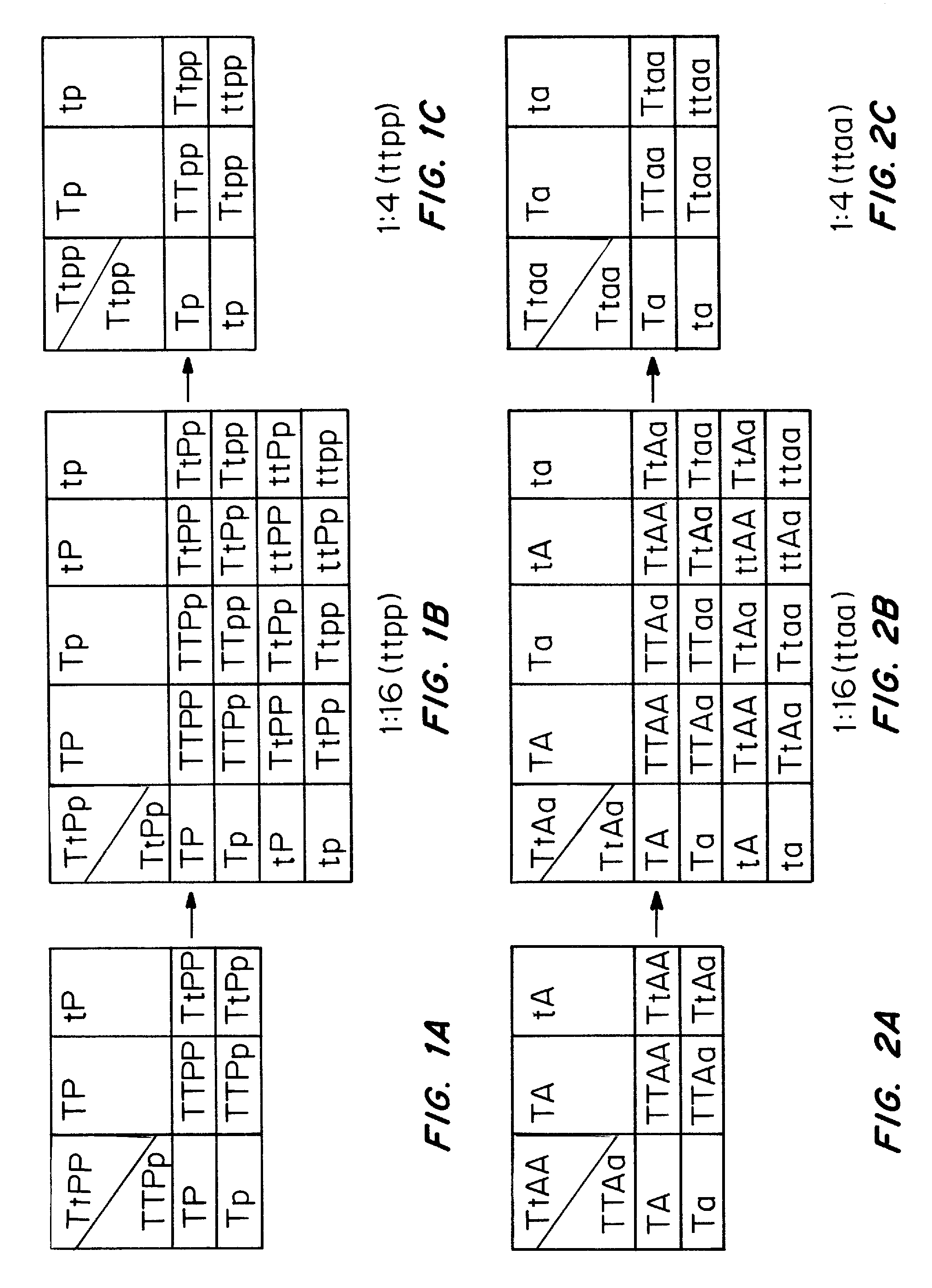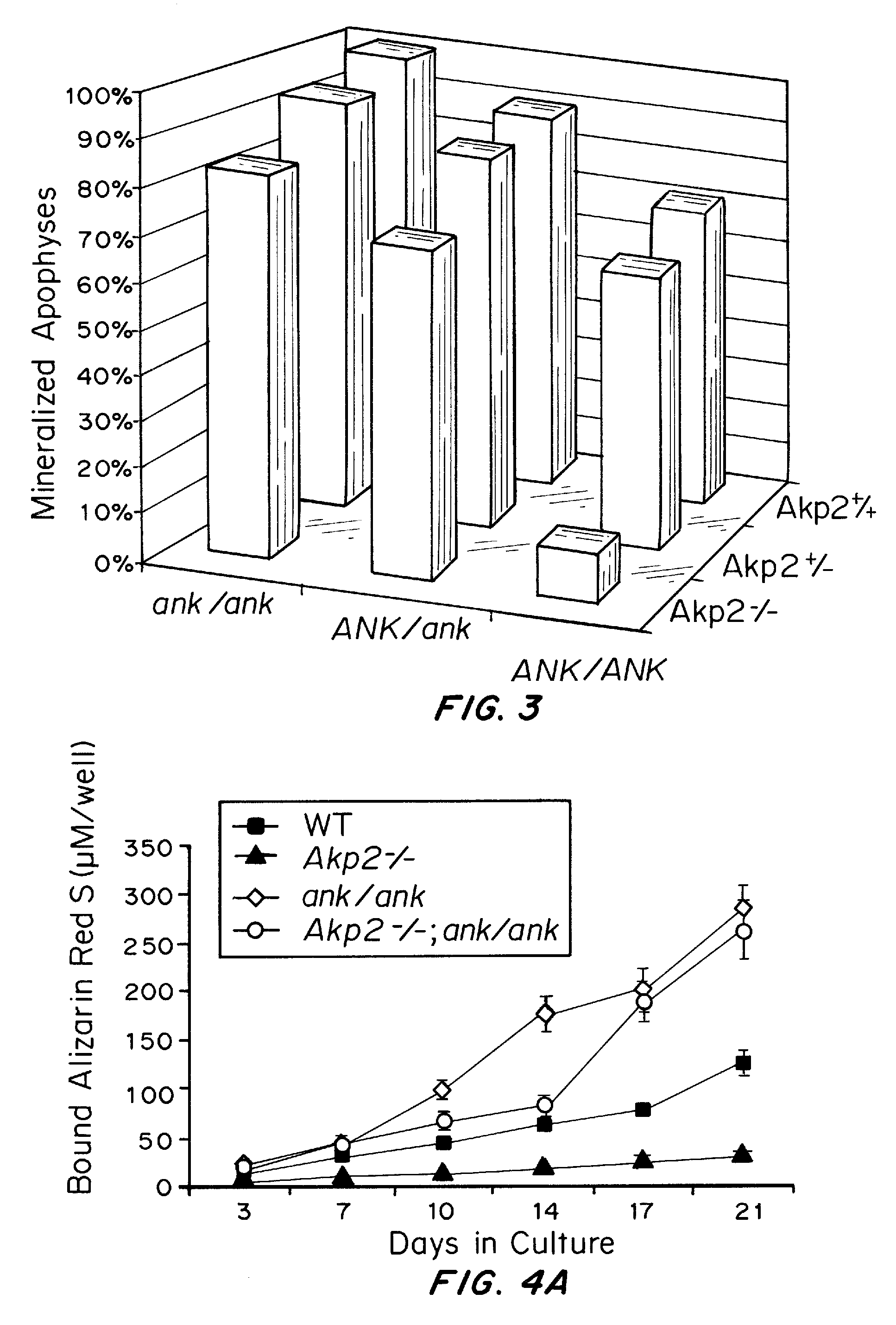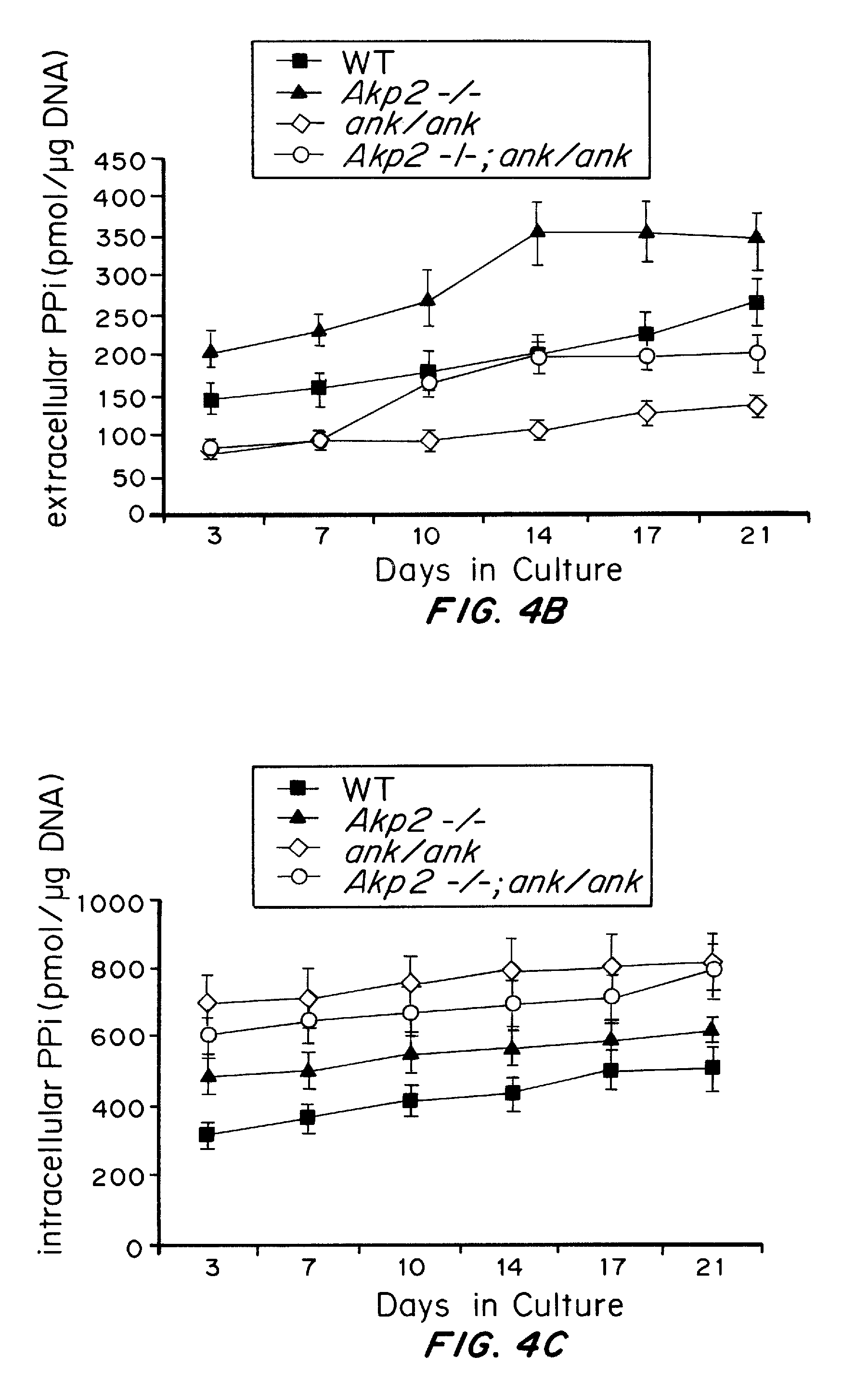Compositions and methods for modulating bone mineral deposition
- Summary
- Abstract
- Description
- Claims
- Application Information
AI Technical Summary
Benefits of technology
Problems solved by technology
Method used
Image
Examples
example 1
Osteoblast Tissue-Nonspecific Alkaline Phosphatase Antagonizes and Regulates PC-1
[0108]Unless otherwise indicated, all chemical reagents were from Sigma-Aldrich (St. Louis, Mo.).
[0109]To indirectly determine the TNAP genotype of pups from our established breeding colony, we measured AP activity of mouse sera by colorimetric assay using p-Nitrophenyl Phosphate (pNPP) as substrate (Narisawa et al., Dev. Dynamics 208:432-446, 1997). Southern blot of tail tissue (Narisawa et al., Dev. Dynamics 208:432-446, 1997) was later used to confirm the genotype of each mouse.
[0110]Primary cultures of osteoblasts were isolated from calvariae of 1-4 day old pups that were hybrids of C57Bl / 6×129 / J mouse strains with wild-type, heterozygote and homozygote TNAP null genotypes. Isolation was performed by a slightly modified version of the time sequential collagenase technique described by Boonekamp et al. (Proc. Kon. Ned. Akad. Wet. B87:371-382, 1984). In brief, calvariae of the same genotype were poole...
example 2
Crossbreeding to Produce Mice that are Heterozygous for the TNAP Knock-Out and the PC-1 Knockout
[0151]Crossbreedings is performed to match the TNAP knock-out and the PC-1 knock-out mice in order to obtain mice that are heterozygous for both genes. These double heterozygous mice are used as a source of tissue as well as primary osteoblastic cells to examine bone mineralization parameters and compared them to those obtained for the TNAP or PC-1 single gene defects. These double heterozygous mice are also used for breeding experiments in order to obtain mice that are homozygous for a PC-1 mutation but heterozygous for the TNAP mutation {[TNAP+ / −; PC-1− / −] or (Ttpp)}. We expect these mice to be born alive and display an amelioration of the bone abnormalities. These breedings also produce mice that are double homozygous for a TNAP and a PC-1 mutation, i.e., [TNAP− / −; PC-− / −] or (ttpp) in FIG. 1B at an average ratio of 1 in 16 born pups if the double mutations is not lethal in utero.
[0152...
example 3
Crossbreeding to Produce Mice that are Heterozygous for the TNAP Knock-Out and the ank Deficiency
[0153]Crossbreedings is performed to match the TNAP knock-out and the ank-deficient mice in order to obtain mice that are heterozygous for both genes as examplified in FIG. 2A. These double heterozygous mice are used as a source of tissue as well as primary osteoblastic cells to examine bone mineralization parameters and compared them to those obtained for the TNAP or ANK single gene defects. These double heterozygous mice are also used for breeding experiments in order to obtain mice that are homozygous for a ank mutation but heterozygous for the TNAP mutation {[TNAP+ / −; ank / ank] or (Ttaa) in FIG. 2B}. We expect these mice to be born alive and display an amelioration of the bone abnormalities. These breedings also produce mice that are double homozygous for a TNAP and an ank mutation, i.e., {[TNAP− / −; ank / ank] or (ttaa) in FIG. 2B} at an average ratio of 1 in 16 born pups if the double ...
PUM
 Login to View More
Login to View More Abstract
Description
Claims
Application Information
 Login to View More
Login to View More - R&D
- Intellectual Property
- Life Sciences
- Materials
- Tech Scout
- Unparalleled Data Quality
- Higher Quality Content
- 60% Fewer Hallucinations
Browse by: Latest US Patents, China's latest patents, Technical Efficacy Thesaurus, Application Domain, Technology Topic, Popular Technical Reports.
© 2025 PatSnap. All rights reserved.Legal|Privacy policy|Modern Slavery Act Transparency Statement|Sitemap|About US| Contact US: help@patsnap.com



